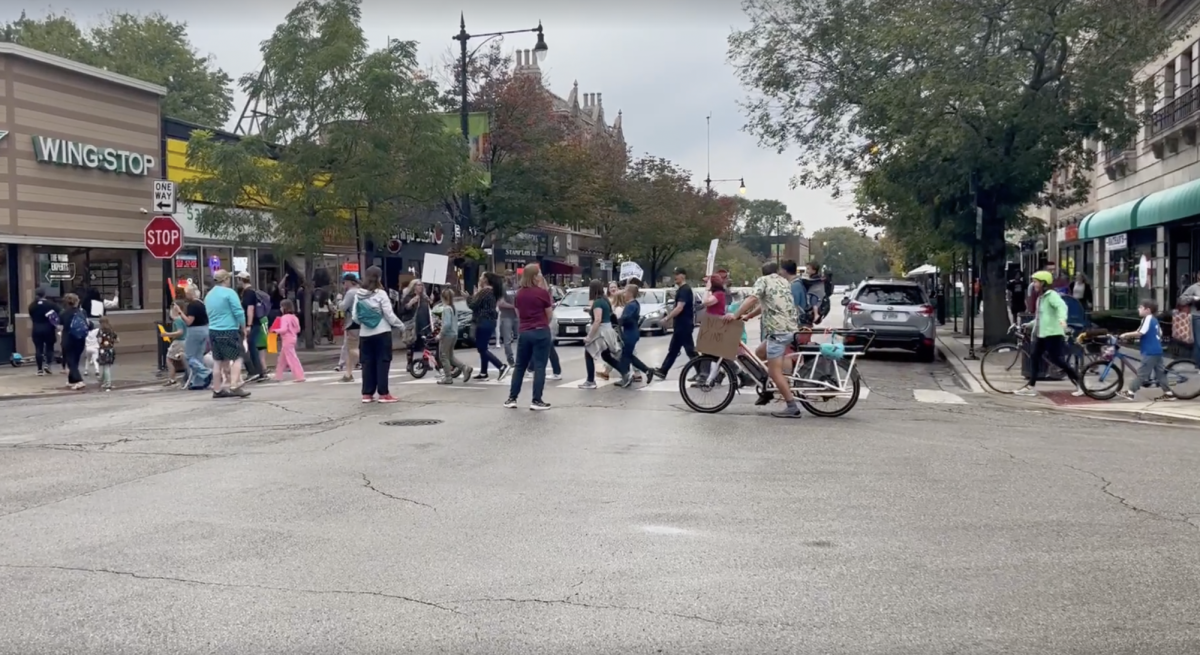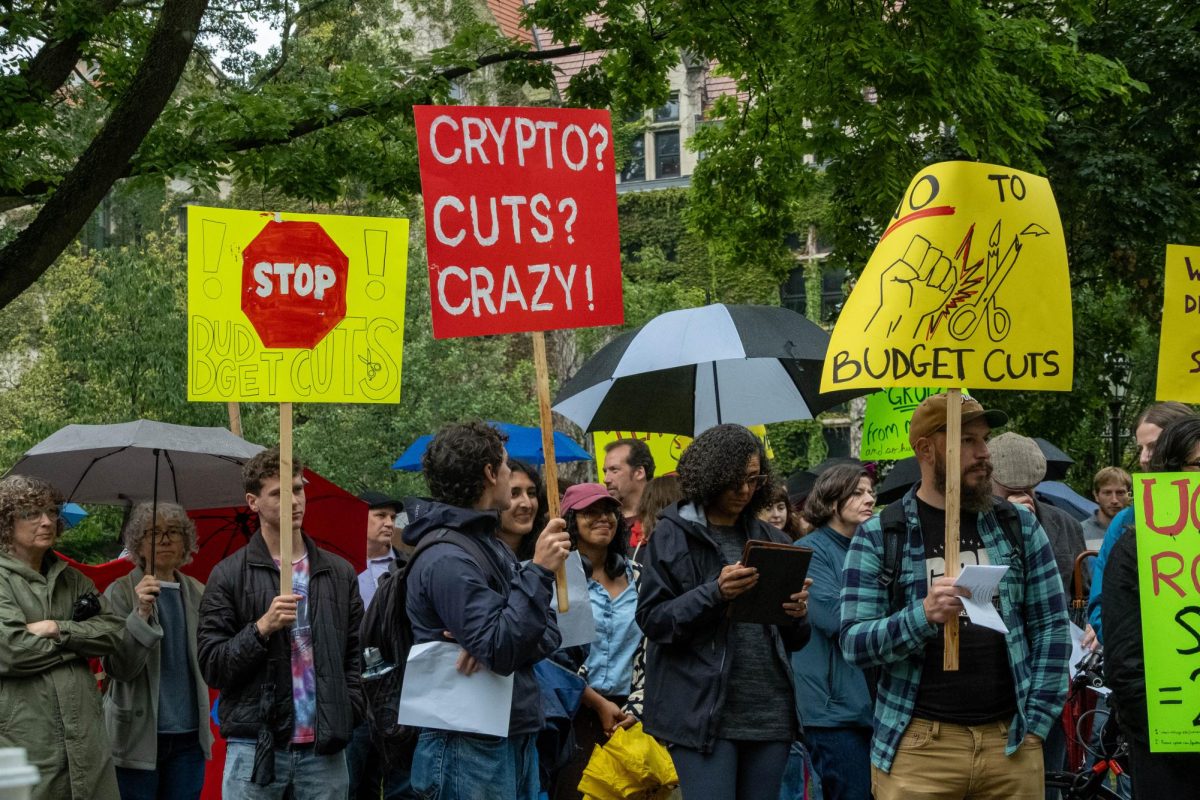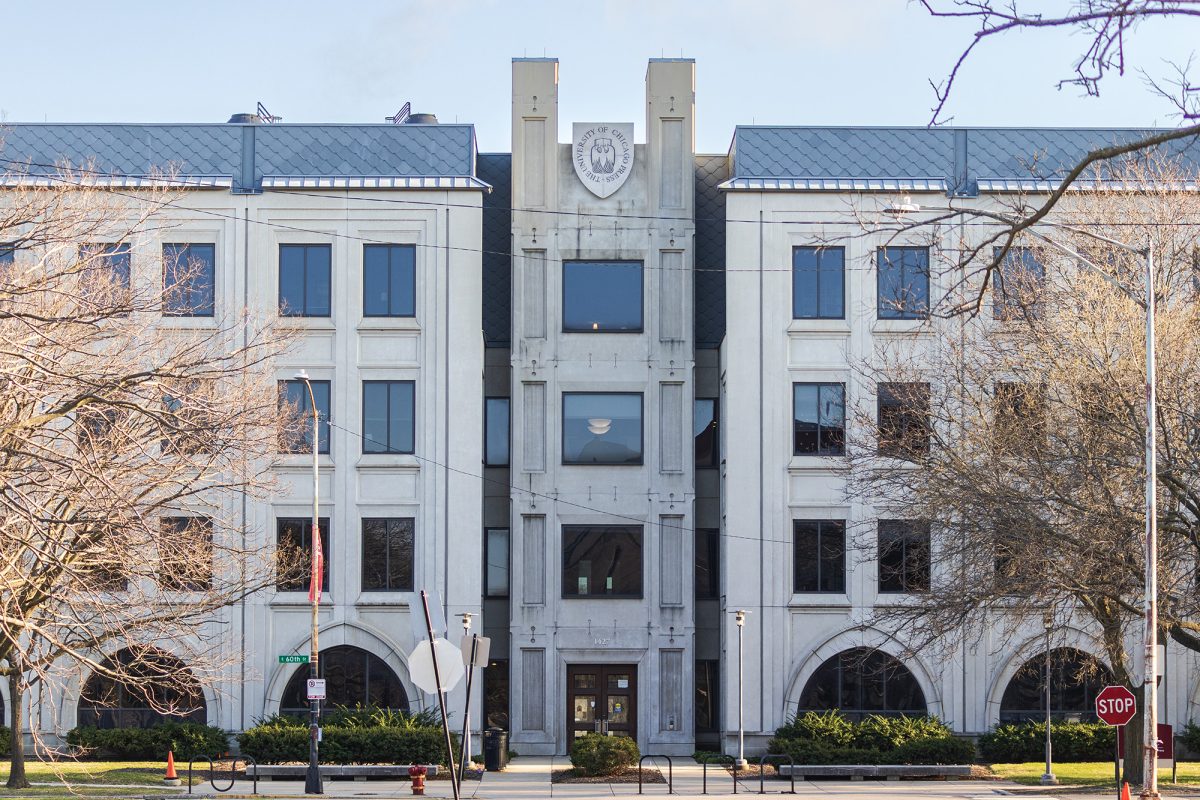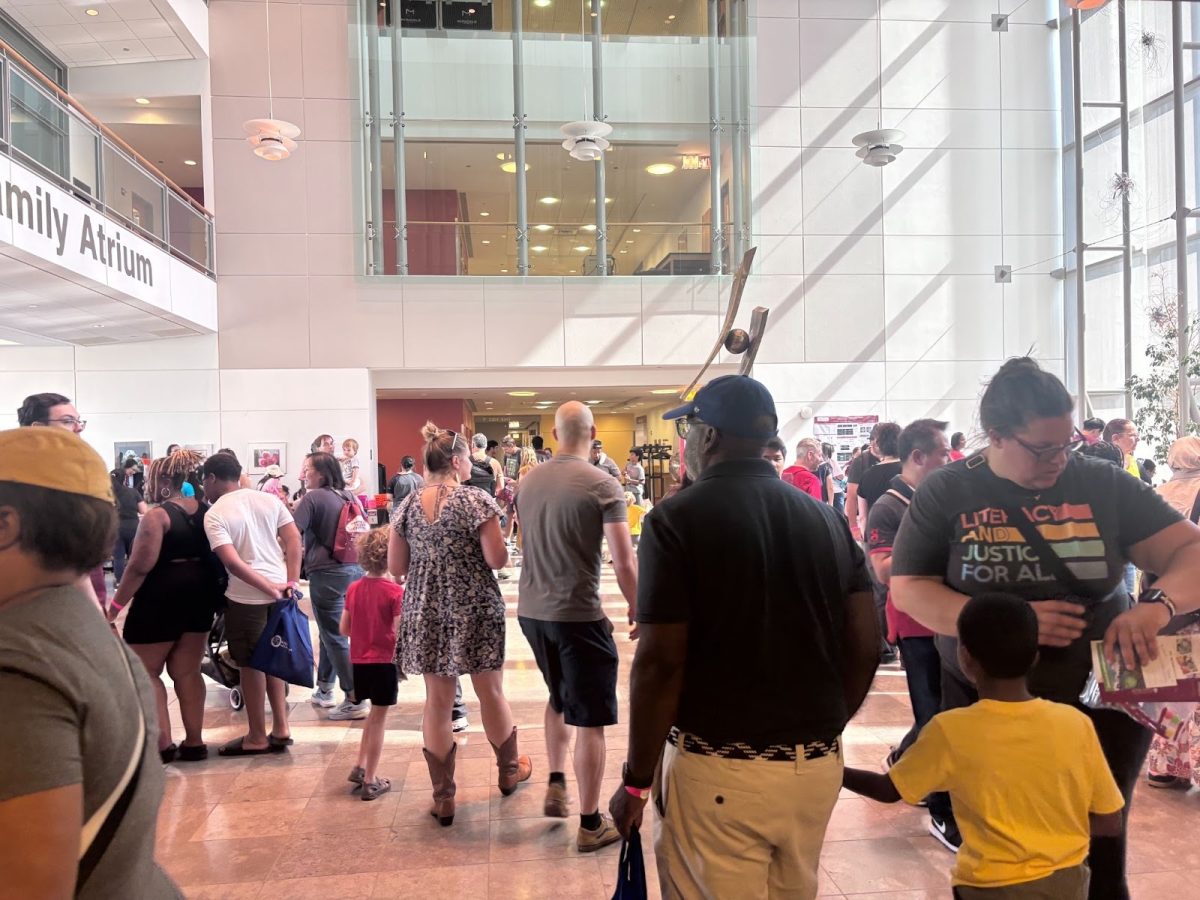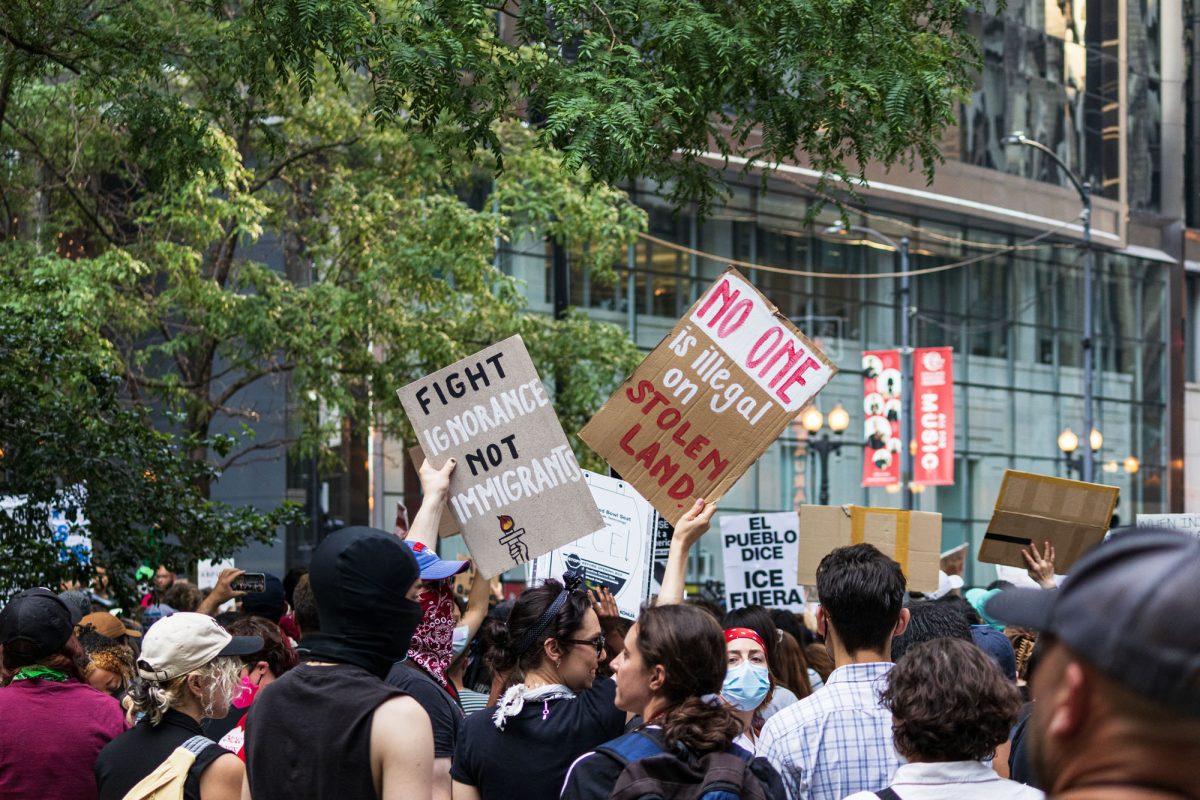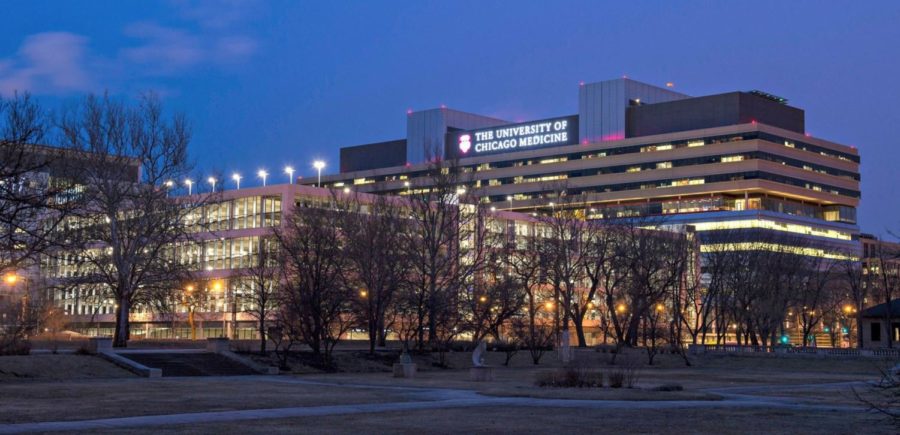Almost 250 people—many of whom were minors—marched along 53rd Street on October 18 to protest Immigration and Customs Enforcement’s (ICE) presence in Chicago. The protest was organized by neighborhood parents, some of whom had also attended the “No Kings” march in downtown Chicago the same day.
The Hyde Park protest came just hours after at least three federal law enforcement agents detained an individual near East 61st Street and South Greenwood Avenue before driving away with him in a black Jeep SUV.
Federal immigration agents have also detained three workers in Hyde Park and an international student at UChicago over the past few days.
Organizers Laura Staley, Jenny Zhang, Seema Ahmad, and Anwuli Anigbo said they had explicitly organized the protest to be child friendly.
“We sort of thought, ‘We want to go protest, we want our kids to protest,’” Staley said. “We have time in the afternoon. Let’s see if other people want to join us.”
Staley explained that she has observed the fears students around Hyde Park and Kenwood have expressed about ICE and believes it is important to empower them in the form of protest and community organizing.
“If we can teach them at three, four, six, [or] eight what it means to protest and why it’s important and create a safe space for them to do it, imagine what they’ll be like when they’re 20,” she said.
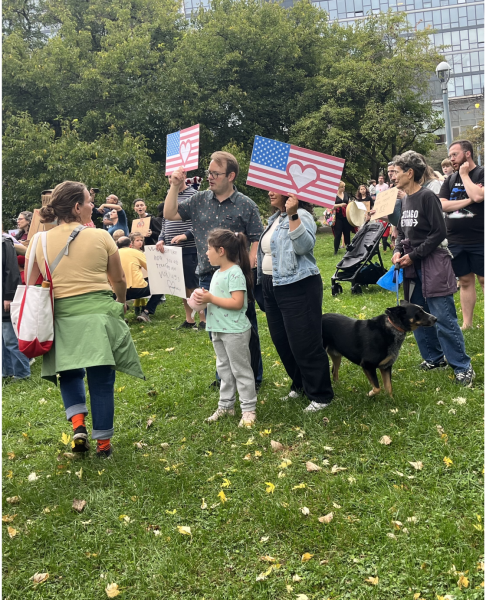
Other parents also found youth-centered action vital. Ahmad, who lives in Kenwood and brought her eight-year-old son to protest, said, “Your instinct as a parent is to shield them, but being in community and solidarity is so empowering. It’s an antidote to everything that’s happening to them.”
Marc Furigay, a middle school English and social studies teacher at the Ancona School in Kenwood, has also noticed growing anxiety among students. He joined the 53rd Street march after marching downtown earlier that day. “It terrifies me, and I have a lot of worr[ies] about how my seventh and eighth graders are internalizing this,” Furigay said.
For Furigay, the stakes are high. “It’s not so much a slide into fascism. I think we’re pretty much already there,” he said. “I want [my students] to be aware of what’s happening and, you know, ideally become part of a solution.”
Linda, a Mexican immigrant who asked to withhold her last name, attended with her nine-year-old daughter. “Just the idea that there is a police state chasing people.… It’s very, very hard,” she said. Though Linda is now a U.S. citizen, several of her friends are in hiding, she explained. She continues to send them as much help and money as she can.
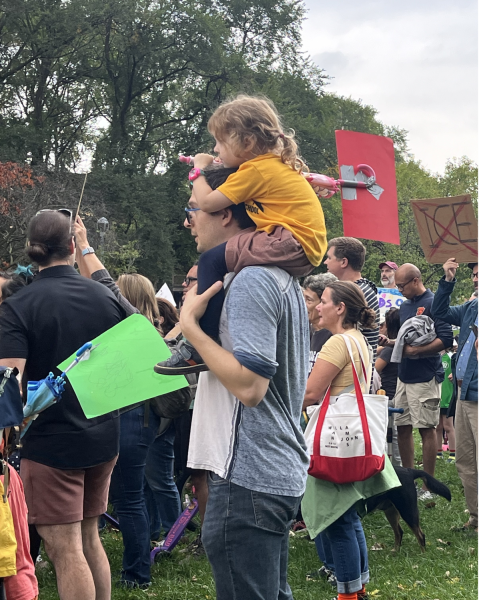
Anigbo observed that the oldest of her three children—who are ages three, 11, and 17—is constantly asking what meaningful action looks like and wondering, “How could we be allowing this to happen?”
“Everything that they understand about what holds the country together just doesn’t seem to exist anymore,” she said. “Childhood is a privilege that we set up, but, in moments like this, you kind of lose that ability to shield your child from reality or that concept of childhood as being something separate and magical.”
Ahmad said that it is the community spirit that makes Hyde Park resilient. “Your kids play soccer together. You go to school together. They’re your neighbors,” she said. “It’s a really special thing to be able to do this as a community.”
Editor’s note: Anwuli Anigbo is the development director at the Invisible Institute. Jamie Kalven, the founding director of the Invisible Institute, is a member of the Maroon’s advisory board.



